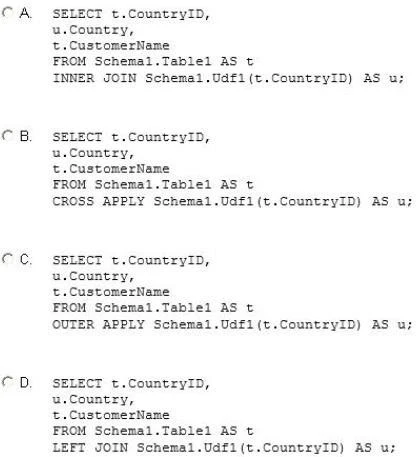You are designing two stored procedures named Procedure1 and Procedure2.
You identify the following requirements:
✑ Procedure1 must take a parameter that ensures that multiple rows of data can pass into the stored procedure.
✑ Procedure2 must use business logic that resides in a Microsoft .NET Framework assembly.
You need to identify the appropriate technology for each stored procedure.
Which technologies should you identify?
To answer, drag the appropriate technology to the correct stored procedure in the answer area. (Answer choices may be used once, more than once, or not at all.)
Select and Place:







